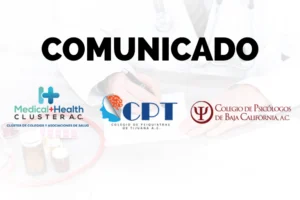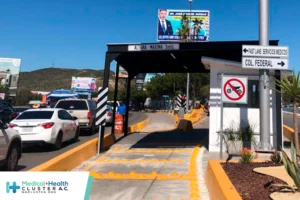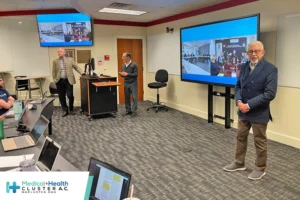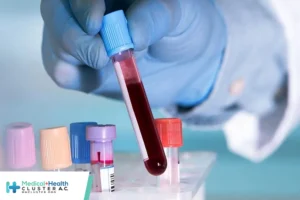En atención a la creciente preocupación sobre la confianza en...
Leer más
Outcomes for Patients Following Hospitalization for COVID-19

As of early March 2021, more than 2.5 million individuals worldwide have died from COVID-19, but many more millions have survived COVID-19 and experienced lasting sequelae. As many as half of patients who survive hospitalization for COVID-19 experience prolonged work absence, financial difficulty, or emotional effects, each of which may further impede recovery.1 The term “long COVID,” coined by patients early in the pandemic, has helped to raise awareness of the life-altering effects of COVID for many patients and to drive government action.2
In this issue of JAMA, the COMEBAC Investigators report on 4-month outcomes for 478 patients who survived hospitalization for COVID-19.3 Although potential sequelae of COVID-19 have been widely reported in news media, smaller case series, and convenience samples, this study is among the first to systematically and comprehensively evaluate the medical outcomes of hospital survivors. As such, it provides key new insights into the prevalence and co-occurrence of longer-term symptoms and organ dysfunction following hospital-treated COVID-19.
In this study,3 all patients hospitalized for COVID-19 at Bicêtre Hospital (a large university hospital in Paris) during spring 2020 were contacted 4 months postdischarge. Patients were asked to complete a telephone survey of symptoms, and all patients treated in intensive care settings or with at least 1 sign or symptom of “long COVID” were invited to the clinic for assessment.
During the clinic visit, patients underwent a comprehensive evaluation, including (1) a history and physical examination; (2) a battery of surveys to measure quality of life, fatigue, dyspnea, dysfunctional breathing, cognition, attention, memory, anxiety, depression, insomnia, and posttraumatic stress disorder; (3) pulmonary function tests; and (4) a high-resolution chest computed tomography (CT). In addition, patients with signs or symptoms of cardiac disease received a transthoracic echocardiogram.
Among 834 patients eligible for the telephone survey, 478 (57%) consented, of whom half reported at least 1 new symptom. The most common symptoms were fatigue (31%), cognitive difficulties (21%), and dyspnea (16%). Among 294 patients invited for an in-clinic assessment, 177 (60%) consented, and their testing revealed symptoms and impairments across multiple domains.
On the quality-of-life survey, scores were lowest in the domains of “role physical” (eg, difficulty performing daily activities), with a median score of 25 on a scale of 0 (worst) to 100 (best). On the fatigue survey, scores were lowest for “reduced motivation,” with a median score of 4.5 on a scale of 1 (best) to 5 (worst). These scores best convey some of the key consequences of long COVID because return to normal living and absence of fatigue are viewed by patients as among the most important factors for overall quality of life after critical illness.4
Surveys for specific conditions in the population of 177 patients revealed sleep disturbance (54%) and cognitive impairment (38%). Among 94 patients who had been admitted to the ICU, anxiety (23%), depression (18%), and posttraumatic stress disorder (7%) were reported, and muscular weakness consistent with ICU-related neuropathy was reported by 27.5% (14 of 51) of patients who had been intubated.
Chest CT abnormalities (most commonly ground-glass infiltrates suggestive of ongoing parenchymal inflammation) were present in 63% of patients who completed the in-person assessment. Nonetheless, pulmonary function was commonly preserved. The mean DLCO (diffusing capacity of the lungs for carbon monoxide) was 87% predicted, and only 22% of patients had a DLCO less than 70% predicted. The higher prevalence of chest CT abnormalities vs dyspnea or gas exchange impairment likely reflects the sensitivity of high-resolution CT imaging.
Impaired cardiac and kidney function were uncommon. Among 83 patients who met criteria for transthoracic echocardiogram, only 8 had a left ventricular ejection fraction less than 50%, and none were less than 40%. In addition, among 95 patients with acute kidney injury during hospitalization, only 2 patients had persistent kidney dysfunction.
The COMEBAC Investigators established a comprehensive COVID-19 follow-up clinic, during a time when health care resources were already stretched thin to meet the needs of hospitalized patients. The utility of follow-up clinics after critical illness has been questioned because there is limited evidence that they improve outcomes such as survival or rehospitalization. However, follow-up clinics provide an ideal mechanism to learn about longer-term outcomes, to acknowledge and empathize with patients’ experiences, and to compare the effectiveness of different treatment strategies.5 As such, follow-up clinics serve a vital role in supporting patients, supporting families, and advancing understanding of the natural history and management of COVID-19 sequelae.5
Overall, the cohort in this study3 revealed wide-ranging physical, cognitive, and emotional symptoms at 4 months following hospitalization for COVID-19. The exact rate of new symptoms remains unknown, as 43% of hospital survivors did not complete the telephone survey, and 40% of eligible telephone respondents declined in-person assessment. Regardless, the prevalence of symptoms will undoubtedly vary across settings and over time as treatment for COVID-19 and circumstances evolve.6,7 Patients in this cohort were treated during a regional surge of COVID-19 and only 4% received corticosteroids. Patients treated in nonsurge settings and with current best practices may fare better.
Importantly, symptoms among participants in this study varied markedly, consistent with prepandemic cohorts of critical illness survivors.8,9 New-onset dyspnea, cognitive symptoms, and neurologic symptoms each occurred in 16% to 23% of telephone respondents, but only 2.5% had symptoms in all 3 domains. One of the important unanswered questions regarding SARS-CoV-2 infection is why some patients experience such severe acute and chronic manifestations, while other patients have minimal symptoms or recover quickly. Age and chronic conditions certainly modify disease manifestations, but do not fully explain the variety of clinical presentations observed.
The heterogeneity of symptom profiles suggests that a single approach to follow-up and management of long COVID will not be effective. The strategy of these investigators3 to use telephone screening followed by in-person assessment provides a potentially scalable approach to managing some patients with long COVID. Anticipatory guidance and screening for new symptoms can readily occur by telephone or with telemedicine technology, with subsequent in-person testing tailored to evaluate the most problematic symptoms.
Lack of funding is consistently reported as a key barrier to implementing critical illness recovery clinics10 and is likely to hinder the development of infrastructure to address long COVID. In a multihospital cohort of patients with COVID-19 in Michigan, 1 in 5 patients did not see a primary care physician within 2 months of hospital discharge.1 Moreover, access to multidisciplinary clinics designed to address the myriad challenges after critical illness or COVID-19 is extremely limited. Thus, along with funding for research to better understand and treat long COVID, simultaneous investment in clinical infrastructure will be needed to support patients as they recover from this challenging disease.
Article Information
Corresponding Author: Hallie C. Prescott, MD, MSc, Department of Medicine, University of Michigan, 2800 Plymouth Rd, North Campus Research Center, Bldg 16, 341E, Ann Arbor, MI 48109-2800 (hprescot@med.umich.edu).
Published Online: March 17, 2021. doi:10.1001/jama.2021.3430
Conflict of Interest Disclosures: Dr Prescott reported receiving grants from the Agency for Healthcare Research and Quality and from VA’s Health Services Research and Development Service outside the submitted work.
Funding/Support: This content is the result of work supported with resources and use of facilities at the Ann Arbor VA Medical Center.
Role of the Funder/Sponsor: The Ann Arbor VA Medical Center had no role in the preparation, review, or approval of the manuscript; and decision to submit the manuscript for publication.
Disclaimer: This article does not represent the views of the Department of Veterans Affairs or the US government.
Créditos: Comité científico Covid




